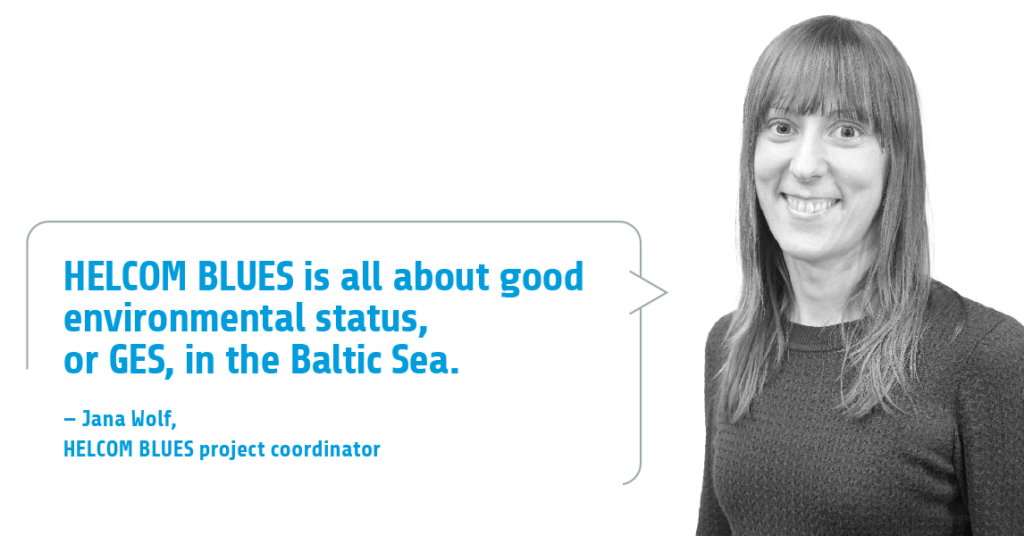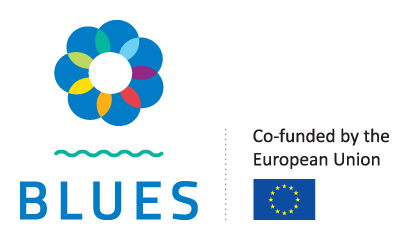
Jana Wolf is the HELCOM BLUES project coordinator. She is based at the HELCOM Secretariat in Helsinki, Finland.
What is HELCOM BLUES all about? What main challenges does it try to solve?
Jana Wolf: HELCOM BLUES is all about good environmental status, or GES, in the Baltic Sea. The project seeks to strengthen regional capacity, coordination and cooperation on developing effective measures to secure good status of the marine environment. This includes, for instance, generating and sharing the necessary knowledge for advancing the development and implementation of joint measures on common pressures affecting our sea such as marine litter and underwater noise. The latter, together with biodiversity, are also the priorities that were identified by the EU for the Baltic Sea under the project’s funding call, with a view to support the EU’s assessment of GES in the region. In addition, HELCOM BLUES will also provide concrete support to the decision-makers within the Baltic Sea region to inform and guide their choices on these issues.
The main challenges HELCOM BLUES aims to solve relate to providing an enhanced assessment of the Baltic Sea. For this, the project will close previously identified knowledge gaps, and consolidate and develop indicators on biodiversity, marine litter, and underwater noise. It will also improve data flows and develop methodology and tools for environmental assessments, as well as address economic and social analyses.
What are the planned outcomes of the project?
The assessments of state and pressures for the priority topics – biodiversity, marine litter and underwater noise – require operational assessment methods, indicators and threshold values. That’s what HELCOM BLUES will primarily focus on. Thus, the further development of regional assessment methodologies and indicators for biodiversity, marine litter and noise are targeted by the HELCOM BLUES project. The planned key outcomes of HELCOM BLUES are:
- a new and improved methodology,
- indicator development, and
- improved assessments.
This will result in an advanced identification and implementation of effective and efficient measure to improve the state of the Baltic Sea.
What will be the major benefits of the HELCOM BLUES project?
All the activities and tasks included in the HELCOM BLUES project are clearly linked to gaps identified in the State of the Baltic Sea report (HELCOM 2018), as well as the priorities that were identified during the planning and preparatory work on the Third Holistic Assessment of the Baltic Sea (HOLAS III). The HELCOM BLUES project intends to provide concrete inputs and needed improvements to the HOLAS III process, and, by extension, to support the national Marine Strategy Framework Directive (MSFD) reporting of those HELCOM Contracting Parties who are also EU member states. It will also support the implementation and follow up of the updated Baltic Sea Action Plan (BSAP).
In general, HELCOM BLUES supports the overall implementation of the BSAP and the MSFD, by providing needed improvements for the assessment of the ecological status of the Baltic as well as improved analyses for identifying new effective regional measures to fill the gaps where good status has not yet been achieved.
The deliverables of the HELCOM BLUES project, including intermediate results, will already be made available to the HELCOM Working groups during the project as part of the arrangements for guidance and supervision. By this, the results will be directly available to competent authorities in the Baltic Sea region and the EU. What’s more, open-access workshops and meetings will also provide all our stakeholders with an opportunity to provide input and feedback to the project, and to enhance the projects visibility and outputs while, at the same time, stimulating our collaboration with other organisations and Regional Sea Conventions (RSC).
